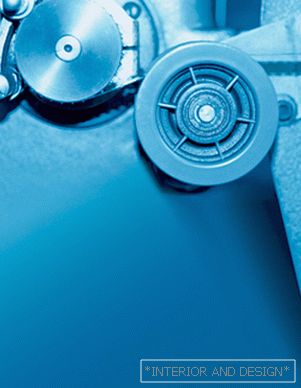Italian decorator and artist Piero Fornasetti (1913-1988) became the favorite hero of an extravagant and fantasy interior. He, like no one else, taught how to be faithful to the virtual world - the world of its own illusions and an unattainable dream.
By theme: Fabio Novembre (Fabio Novemre) - surrealist and provocateur
The famous Italian glorified the image of a beautiful lady. In the early 1950s, on the pages of an old magazine, he saw a portrait of an opera diva of the beginning of the century and, as if spellbound, began to depict it on his wares. The work of the artist is continued by his son Barnab, who is at the head of the Fornasetti enterprise, producing limited items according to Pierrot’s sketches.
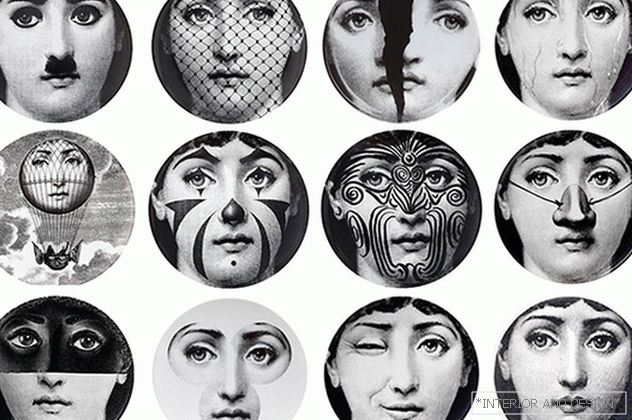
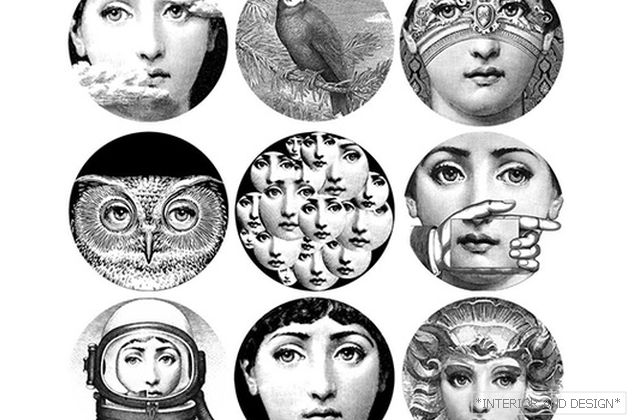
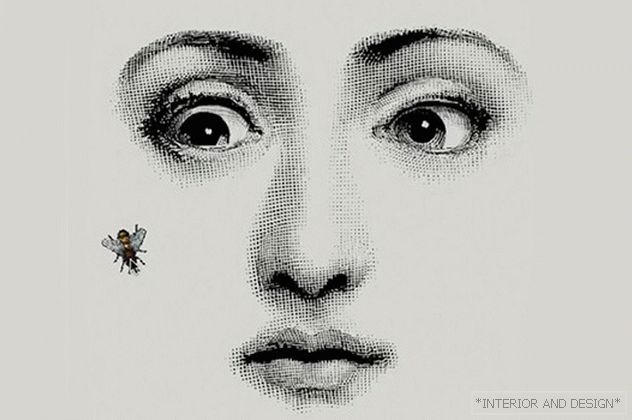
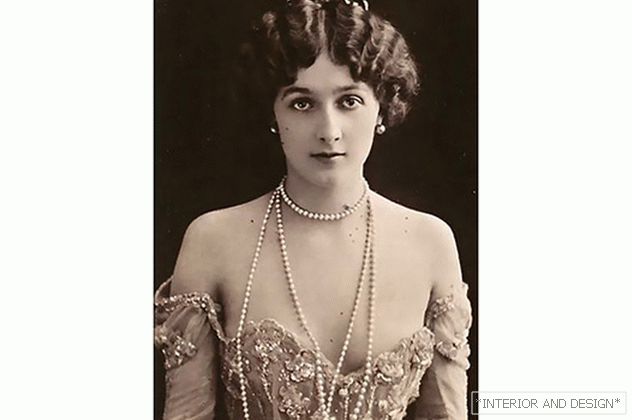 Singer Lina Cavalieri.
Singer Lina Cavalieri. 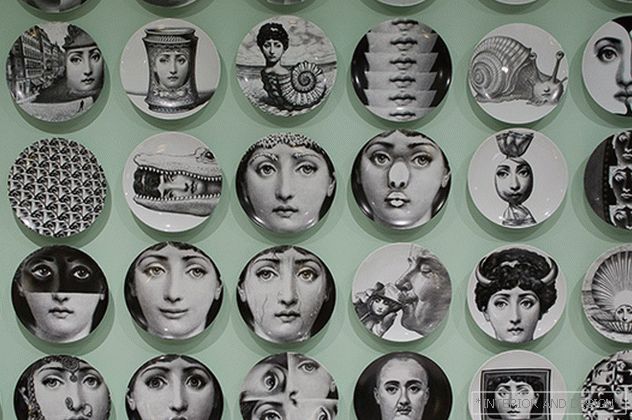
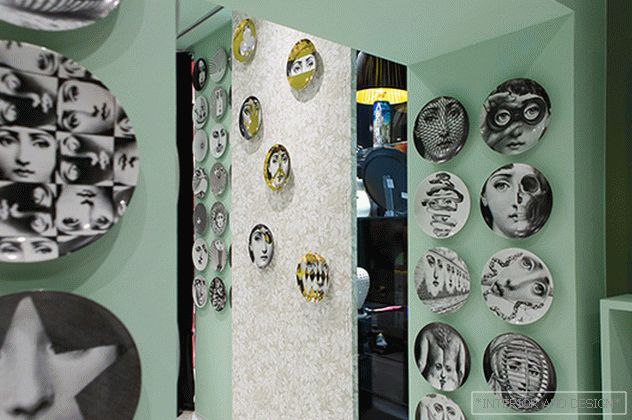
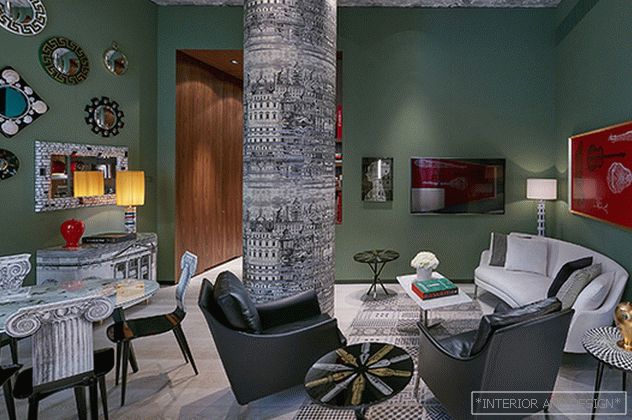
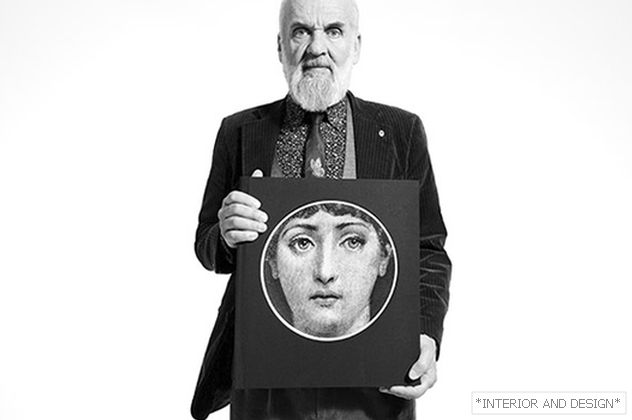 Barbara Fornasetti (Barnaba Fornasetti).
Barbara Fornasetti (Barnaba Fornasetti). The virtual "novel" by Piero Fornasetti and his muse, Lina Cavalieri, lasted a lifetime - Piero created more than 500 variations of the singer's face. Portraits of Lina decorated the dishes, furniture and accessories that Fornasetti had invented for almost half a century. The singer was really good, she was considered the first beauty, but it was Fornasetti who made her a true celebrity. “Lina embodies the Woman for me,” Fornasetti said. - Not a specific person, but an archetype, a deity. This is the standard of feminine beauty. ”
Related: Comme des Garçons: Fornasetti costume
Piero was born in 1913 in a small town near Milan. But in a big house - his parents were swimming in money. For an impressionable boy, this house became a source of many fears and joys: the complex architecture of the building resembled a labyrinth, and a multitude of stairs reinforced this impression. The boy could wander for hours in these fairy-tale palaces.
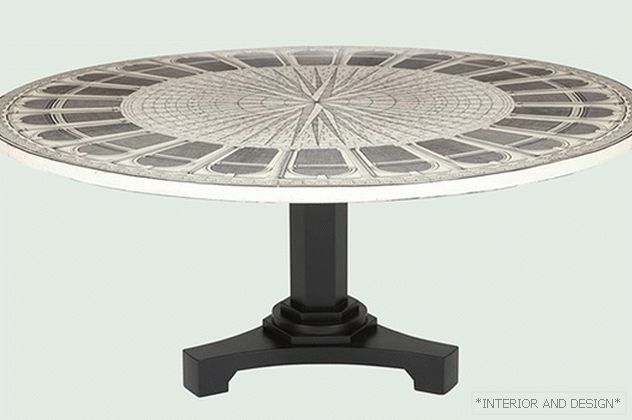 Dining Table Architettura, Piero Fornasetti.
Dining Table Architettura, Piero Fornasetti. 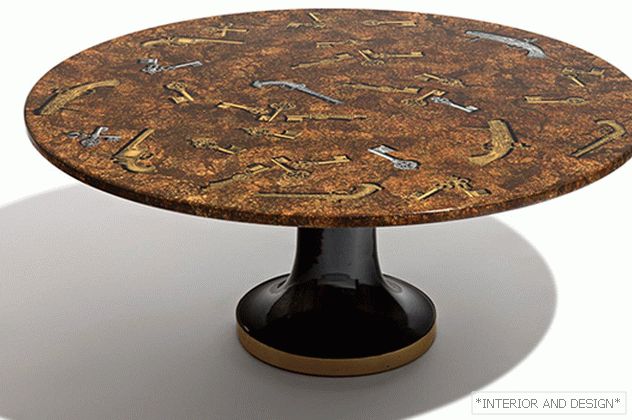 Coffee table Chiavi e Pistole, Piero Fornasetti, 1961.
Coffee table Chiavi e Pistole, Piero Fornasetti, 1961. 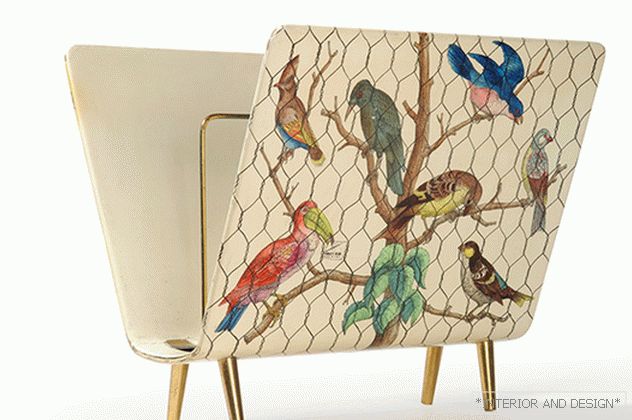 Magazine Rack, Piero Fornasetti.
Magazine Rack, Piero Fornasetti. He received his first experience as a decorator at the age of 10, painting the walls of a nursery with his own hands. At 17, he won a grant to study at the Brera Academy of Fine Arts, but ... turned out to be a careless student. Two years later, parasitism (Piero later admitted that he was immediately bored), he was expelled. The youth didn’t upset it at all - even then he was spinning among the bohemian youth who didn’t put academic science into anything.
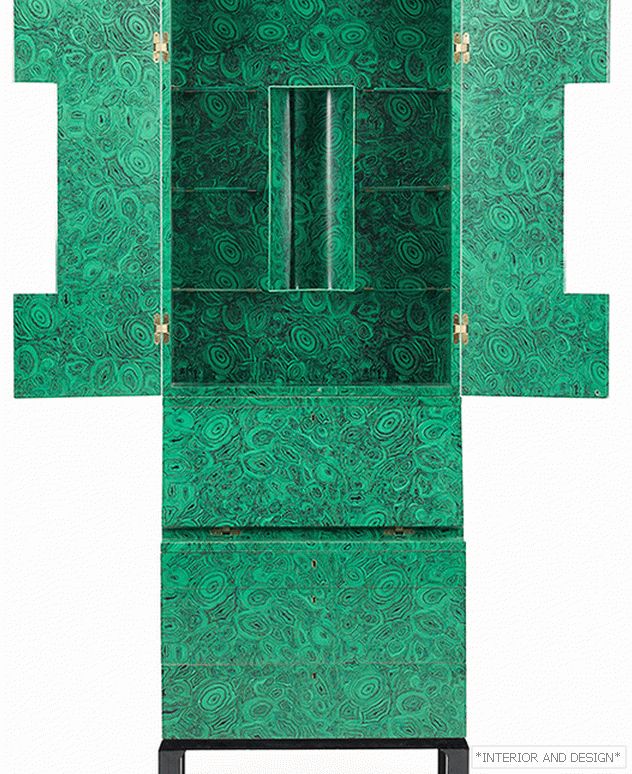 Malachite Bunker, Piero Fornasetti, 1952-1958.
Malachite Bunker, Piero Fornasetti, 1952-1958. 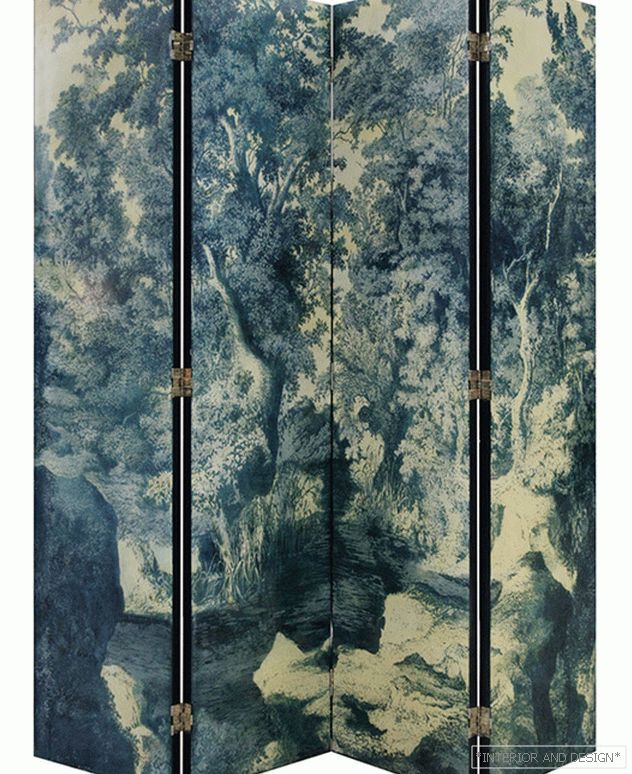 Ширма House of Cards, Piero Fornasetti, 1952
Ширма House of Cards, Piero Fornasetti, 1952 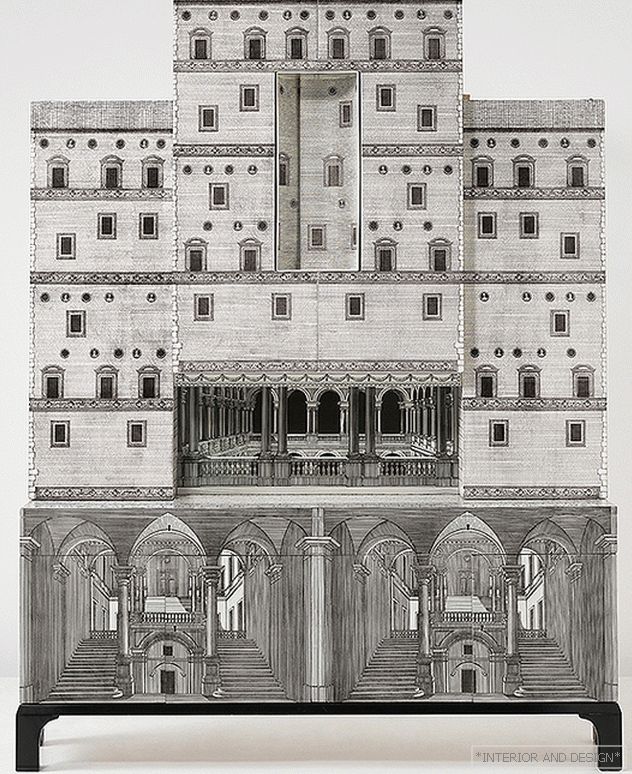 Трюмо Architecture, Piero Fornasetti
Трюмо Architecture, Piero Fornasetti 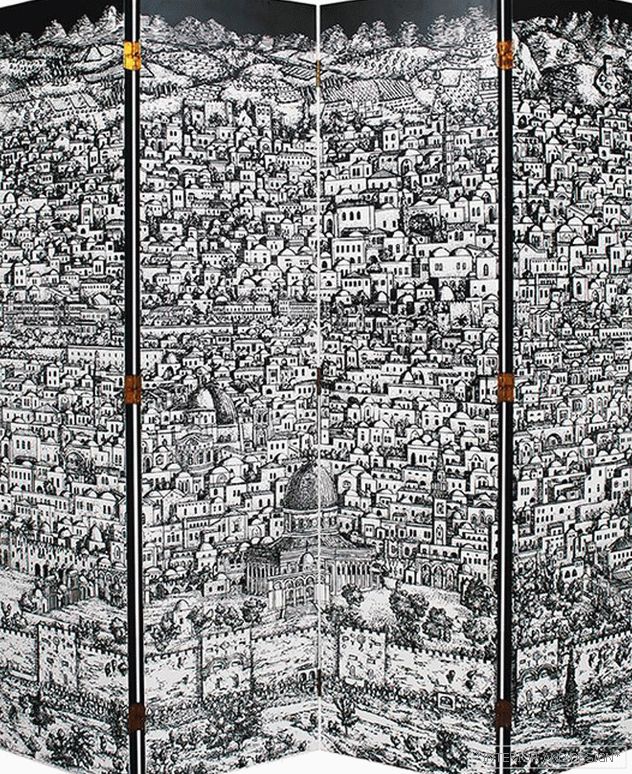 Ширма Jerusalem, Piero Fornasetti
Ширма Jerusalem, Piero Fornasetti 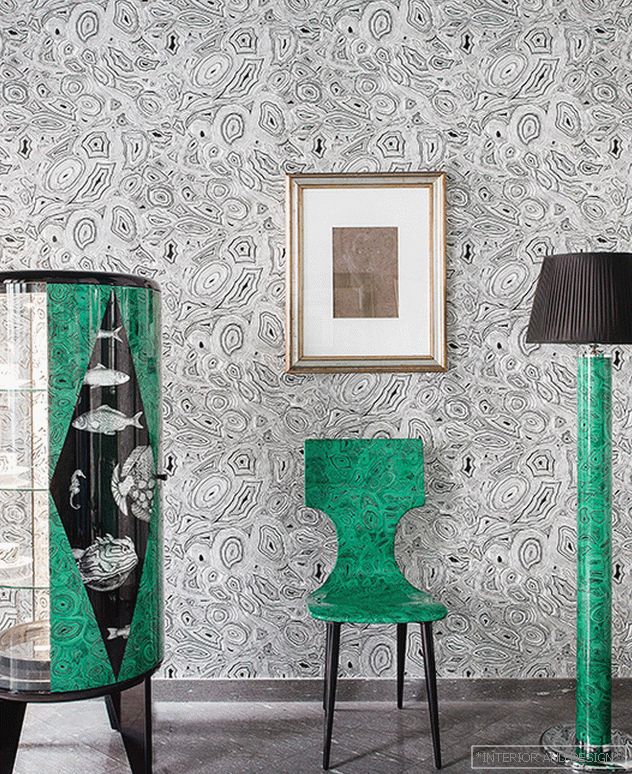 Malachite, Piero Fornasetti
Malachite, Piero Fornasetti Pierrot joined Joe Ponty as an apprentice and rather quickly became a full co-author of the master. Working with Ponty taught him to feel the volume, to perceive the object holistically. But only to destroy this integrity. Pierrot believed that the decor is primary.
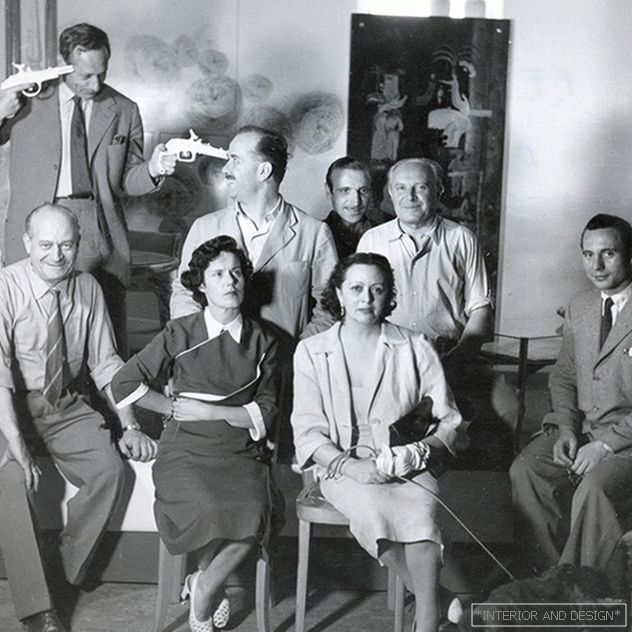 Piero Fornasetti with Joe Ponti. © Atelier Fornasetti Milan
Piero Fornasetti with Joe Ponti. © Atelier Fornasetti Milan “The chair will not cease to be a chair if it looks like arap,” he explained the concept of one of his landmark works, the chair “Moor”. - But you can be deceived. The tabletop covers the seat, and you see only a foreigner. Unusual companion at dinner, is not it? "
Related: Rene Magritte: Mysterious and Unpredictable
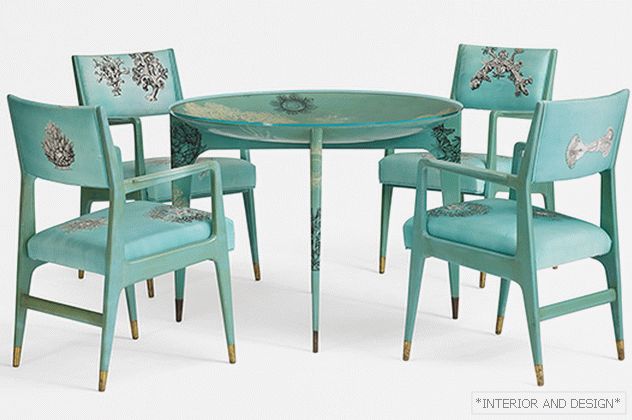 Обеденная группа Madrepore, Gio Ponti & Piero Fornasetti, 1950-1952
Обеденная группа Madrepore, Gio Ponti & Piero Fornasetti, 1950-1952 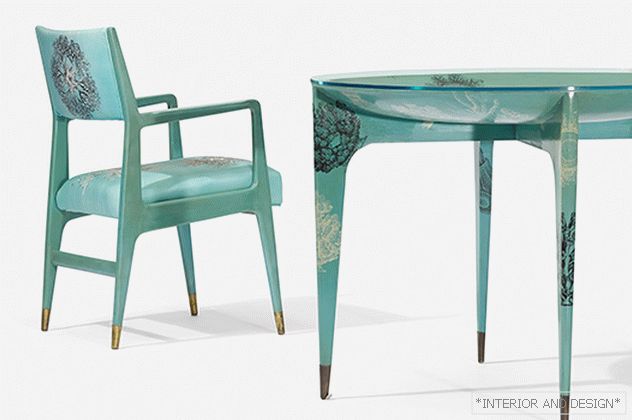 Фрагмент обеденной группы Madrepore, Gio Ponti & Piero Fornasetti, 1950-1952
Фрагмент обеденной группы Madrepore, Gio Ponti & Piero Fornasetti, 1950-1952 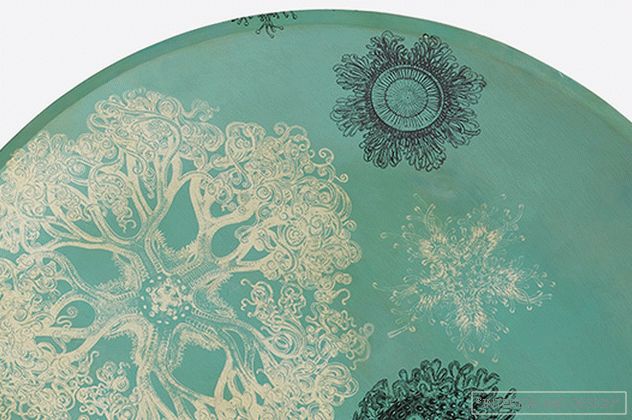 Фрагмент стола Madrepore, Gio Ponti & Piero Fornasetti, 1950-1952
Фрагмент стола Madrepore, Gio Ponti & Piero Fornasetti, 1950-1952 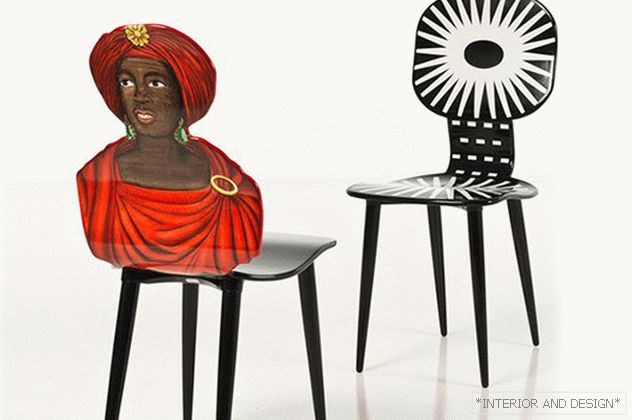 Стул Moro, Piero Fornasetti
Стул Moro, Piero Fornasetti Fornasetti was a strong graphic artist, and his own design objects were first decorated in lithography techniques. Production had to start from scratch and most: no one wanted to take up the production of plates with the image of crumpled newspapers and winking heads. The designer opened a small workshop and atelier in a closet next to his home in Milan. The workshop - even loudly said: in fact, Piero bought a kiln for ceramics.
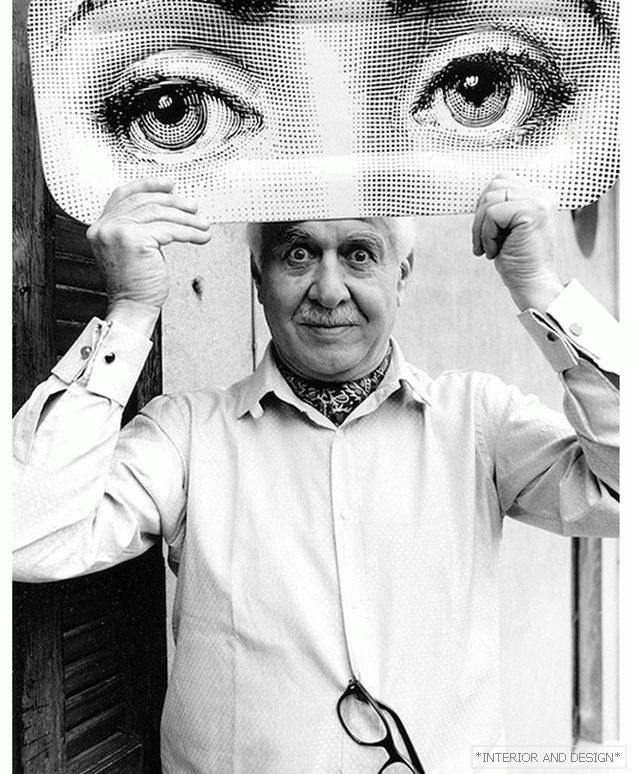 Piero Fornasetti (Piero Fornasetti)
Piero Fornasetti (Piero Fornasetti) In addition to numerous variations (more than 11,000 sketches, of which not all have been worked out yet!) Of his own works, he turned to the work of friends, even those from his student years, surrealist Giorgio De Chirico, for example. He was criticized, condemned, and yet limited collections of dishes, caskets and furniture diverged clean. Soon the works of Fornasetti became the subject of worship, which were auctioned during the wizard's life.
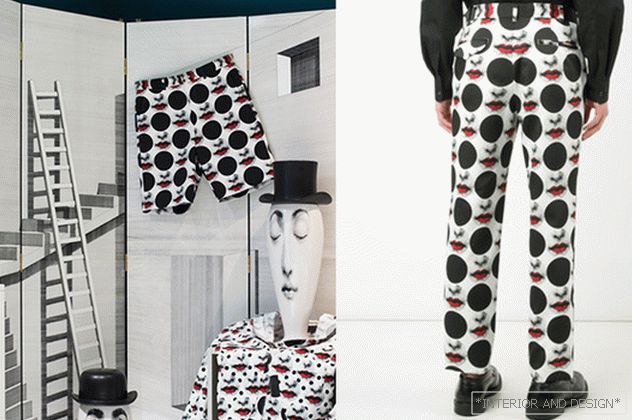
He, however, shied away from fame. It seems that all his life he lived in that house of his labyrinth from his childhood, without leaving the halls of his mind. Without changing homes, wives, cars, if materials allowed, it seems, and clothes. He was just as constant in his work. Once and for all the chosen motives: Lina’s face, myriads of butterflies, fish, as if redrawn from old atlases, clippings from old newspapers, ancient architecture, he carried through all his work.

The designer combined his love for graphics, antique harmony and Renaissance art of tricks, creating bizarre, phantasmagoric things in the spirit of theatrical props. He called himself an apologist for surrealism and believed that he depicted the hidden essence of objects. Sometimes, however, he himself also beat the pathos, stating publicly that he was nothing more than a magician of design, who was able to lead everyone for half a century.

